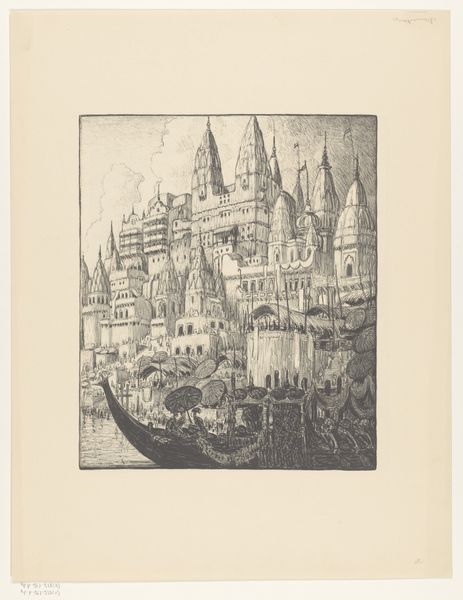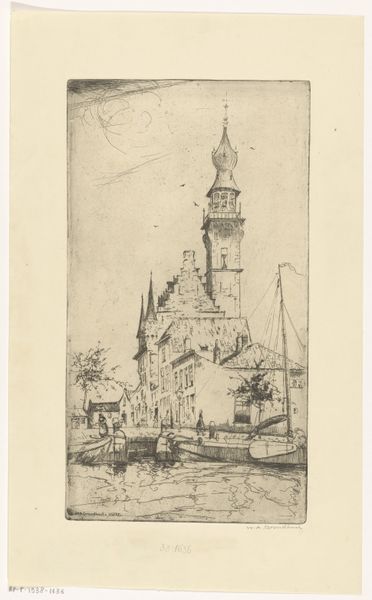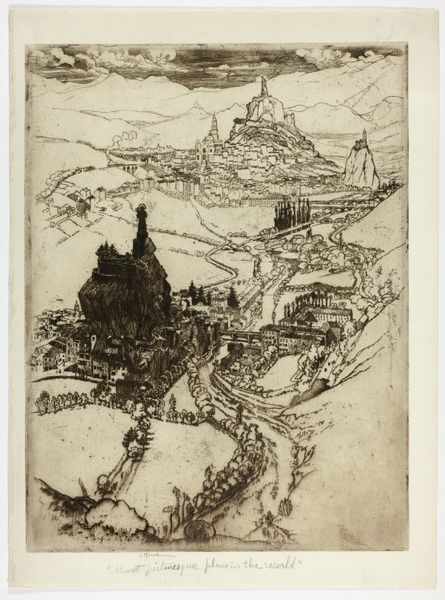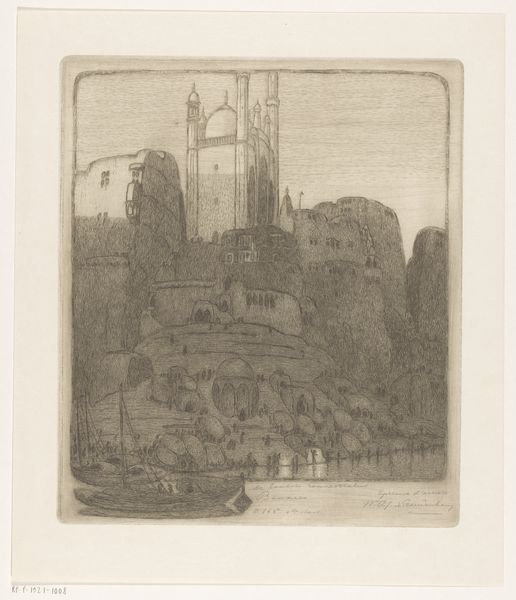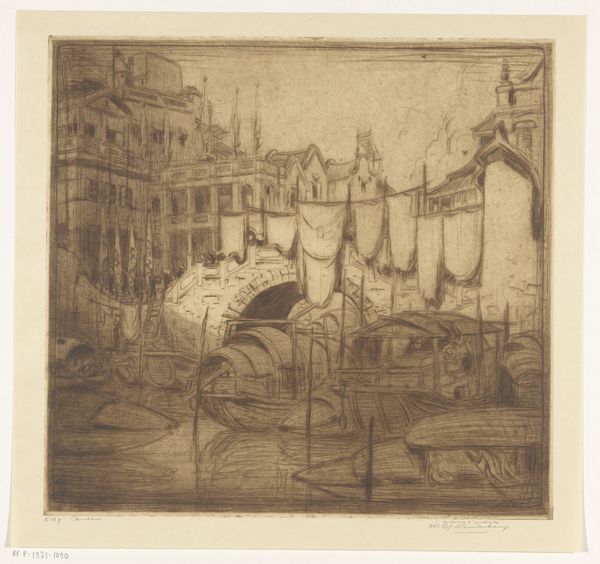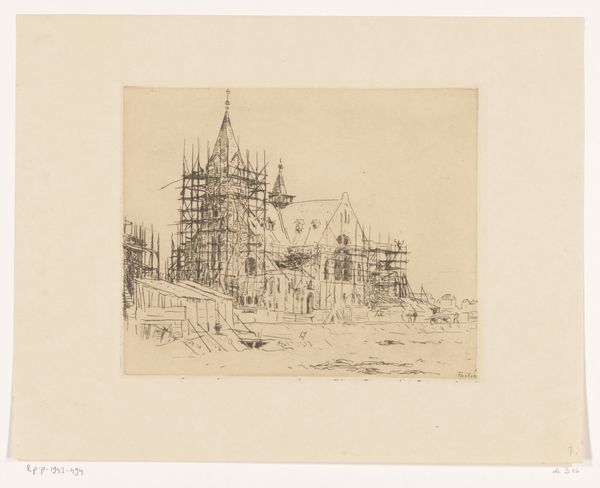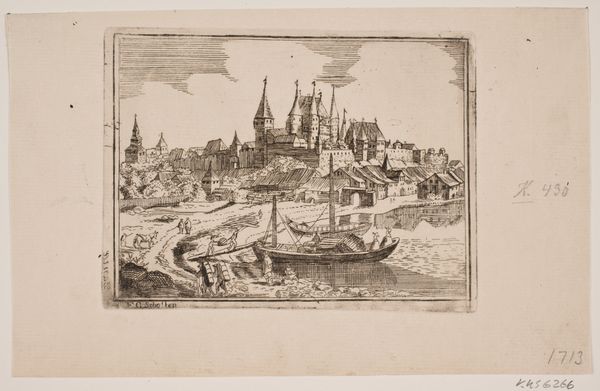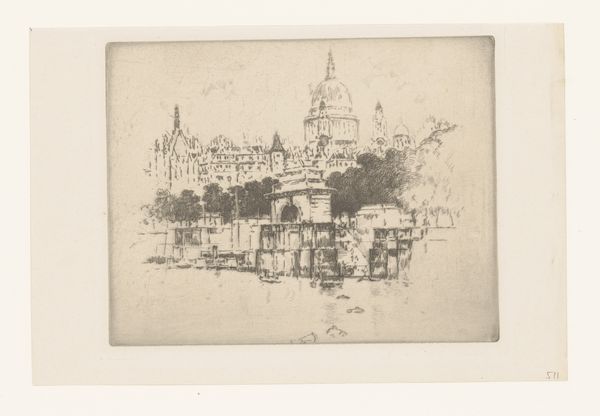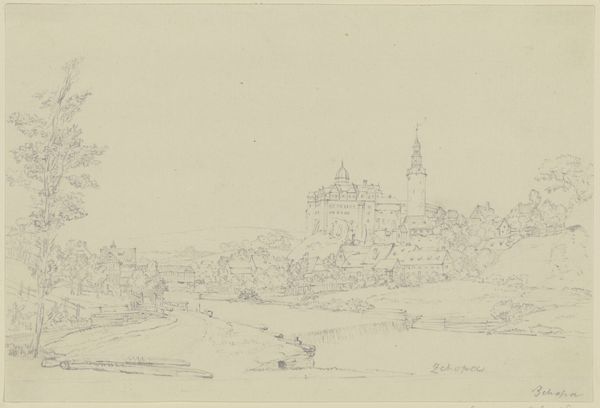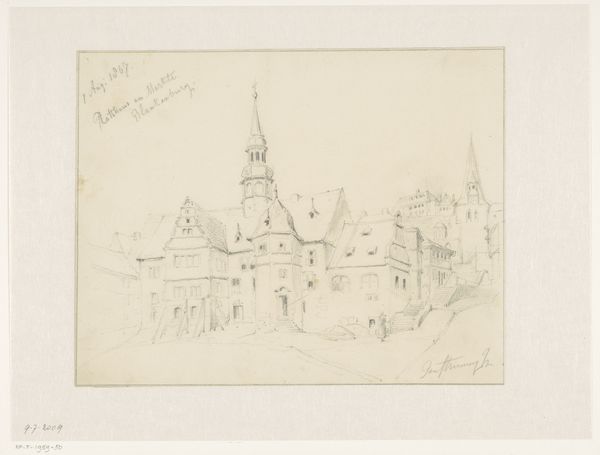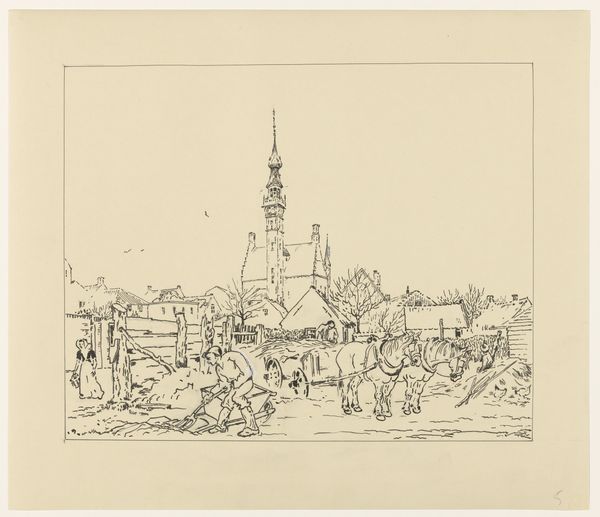
#
comic strip sketch
#
light pencil work
#
pencil sketch
#
old engraving style
#
river
#
personal sketchbook
#
pen-ink sketch
#
pen work
#
sketchbook drawing
#
storyboard and sketchbook work
#
sketchbook art
Dimensions: height 367 mm, width 319 mm
Copyright: Rijks Museum: Open Domain
Curator: This delicate etching, entitled "Tempels, Benares," was likely created between 1915 and 1919 by Wijnand Otto Jan Nieuwenkamp. The artist used light pencil work and pen-ink in the creation of this work. Editor: Immediately, I’m struck by the texture; it's a riot of fine lines that create a visual tapestry. The density of marks describes form but also induces a sort of dreamlike haziness. Curator: The subject matter deeply interests me, this artwork provides insight into orientalist views and their social impact at the time. "Tempels, Benares," it is titled, showing the Western fascination with Asian architecture and spirituality during the early 20th century. Editor: There is an architectural fantasy aspect to how the temples are presented, however. The interplay of light and shadow, achieved solely through these dense webs of lines, shapes forms of striking dimensionality. Look at how the pencil strokes build the domed structures in particular. Curator: Considering the social and historical period, one might interpret this as both an appreciation and an appropriation of cultural heritage. We must remember the effects of colonial practices of documentation which exoticize subject’s like these temples while the artist may have genuinely sought to capture the essence of the place. Editor: Perhaps. But the repetitive strokes, the almost obsessive detailing - do they signify a deeper symbolism, possibly representative of meditation, reverence, a connection with the divine? I see echoes of symbolism rooted within visual structure itself. Curator: It prompts me to consider how contemporary Indian artists reacted to such Western portrayals and whether they embraced, rejected, or re-appropriated them in their own work, thereby steering narratives around self-representation and post-colonial identity. Editor: Yes. The beauty resides in this visual architecture and semiotics. Nieuwenkamp used formal strategies—strokes, texture, forms—to articulate an experience.
Comments
No comments
Be the first to comment and join the conversation on the ultimate creative platform.
